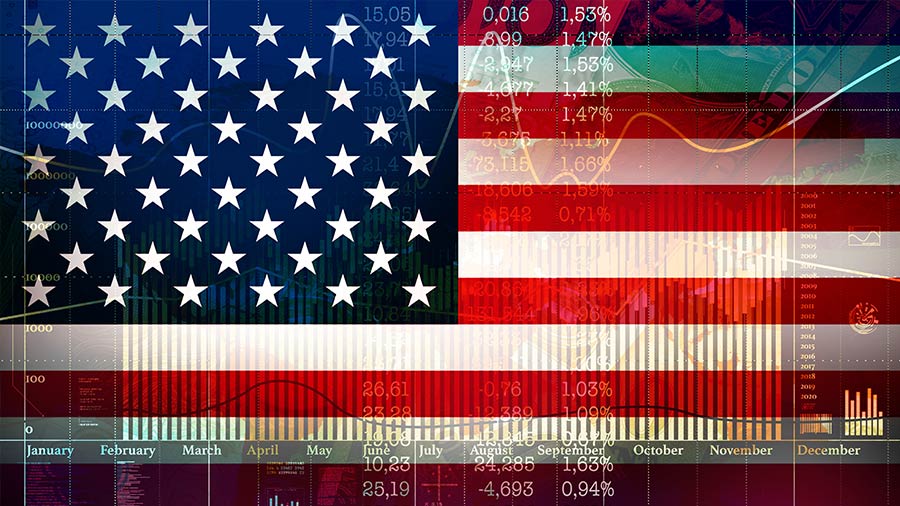Personal Wealth Management / Market Analysis
Episode V: The Meme Stocks Strike Back
Meme stock chatter is back, but it doesn’t mean irrational exuberance has taken hold.
Editors’ Note: MarketMinder doesn’t make individual security recommendations. Those mentioned below are incidental to the broader theme we wish to highlight.
Meme stocks—surging companies popularized on social media—have returned to headlines, stirring concerns irrational exuberance is inflating a bubble. But some perspective seems in order: A handful of tiny, high-flying stocks do not a bubble make. What is happening today isn’t new, unique or even all that rare, and we caution investors against thinking this time is different.
The names hogging attention this round include department store chain Kohl’s, real estate platform Opendoor Technologies and donut maker Krispy Kreme. Their recent moves echo 2021, when the original meme stock craze—led by video-game retailer Gamestop and movie theater chain AMC Entertainment—got the attention of investors and politicians alike. Some connected recent enthusiasm with cryptocurrency optimism (which happened back in 2021, too). Others posited stocks’ post-correction rebound to all-time highs has stirred FOMO (fear of missing out), inspiring individual investors to jump headlong into smaller firms with little-to-no profitability. Naturally, skeptical analysts view the excitement as a sign sentiment is stretched.
We understand why these stocks are getting attention: Huge positive returns tend to generate buzz. But although some of these names are well-known staples at your nearby shopping plaza, they aren’t exactly titans in global capital markets. On a market capitalization basis, Kohl’s ($1.4 billion), Opendoor Technologies ($1.7 billion) and Krispy Kreme ($702 million) sound big in a vacuum.[i] But they are small potatoes next to the S&P 500’s $54.1 trillion market cap.[ii] Semiconductor giant Nvidia’s market cap is $4.3 trillion—making it the world’s most valuable company—but even other well-known names trounce meme stocks’ size.[iii] See the market caps of American banking giant JPMorgan Chase ($829 billion) and US automaker Ford ($44.9 billion, which isn’t even very big).[iv]
Beyond their small size, these firms also shared low per-share prices—even after the recent moves. Opendoor and Kohls are technically penny stocks. And penny stocks or tiny firms occasionally bursting aren’t all that uncommon. At any point in the market cycle, you can find a stock that surged for a short stretch.
To illustrate this, let us revisit 2022, an overall tough year for global markets. From the Russia-Ukraine war to Fed rate hike worries, a number of headwinds hit sentiment hard, and global stocks entered a bear market, falling -26.6% from January to mid-October.[v] Yet even during those challenging nine and a half months, some tiny stocks had their moments. Cannabis producer Sundial (market cap $386 million) surged 88.2% from the end of January to the end of March, well ahead of global stocks’ 3.5% gain over the same period.[vi] Silver and gold miner Hycroft Mining Corp. (market cap $134.7 million) skyrocketed 780.4% (compared to global stocks’ 5.9%) in March.[vii] Medical device designer Butterfly Network (market cap $479.7 million) soared 254.5% from mid-May to mid-August, trouncing global stocks’ 7.3%.[viii]
Now, those hot stretches didn’t last. But we highlight them to make a broader point: Individual firms can have a gangbusters week, month or even quarter. Outliers can pop up during strong stretches, weak periods and flattish times. Small, thinly traded stocks—especially penny stocks—occasionally boom and bust like this, sometimes tied to pump-and-dump schemes ne’er-do-wells perpetrate.
Rather than focus on any individual or handful of stocks, consider what the category is doing. Microcaps’ recent moves aren’t super out of line with the broader market. See how the MSCI US Microcap Index—which has over 1,160 constituents and an average market cap of $162 million—has fared compared to the S&P 500 and MSCI World this year.[ix]
Exhibit 1: No Big Outliers Here

Source: FactSet, as of 7/29/2025. MSCI US Microcap Index and MSCI World Index returns with net dividends and S&P 500 Total Return Index, indexed to 100 on 12/31/2024, 12/31/2024 – 7/28/2025.
After some brief January outperformance, US microcaps (3.1%) have trailed the S&P 500 (9.4%) and the MSCI World (12.0%) year to date.[x] Microcaps can be more volatile than their larger brethren for several reasons (e.g., fewer number of shares available and less liquidity), but their direction has been in line with the broader market’s. That suggests there isn’t anything wonky going on in the microcap space.
A longer-term look at microcap returns also puts 2025 in perspective. Back in 2021, US microcaps soared during the original meme stock craze— out of line with the S&P 500 and MSCI World. (Exhibit 2) That 2021 outlier aside, the categories have generally charted a similar path, this year included.
Exhibit 2: US Microcaps’ 2021 Was More an Outlier Than 2025

Source: FactSet, as of 7/31/2025. MSCI US Microcap Index returns with gross dividends, 12/31/2018 – 7/30/2025.
We aren’t saying a handful of meme stocks’ ascent is rational, and some pockets of the market may be over their skis. But that is normal. That some are fearing irrational exuberance today indicates broad euphoria isn’t here yet.
[i] Source: FactSet, as of 7/29/2025.
[ii] Ibid.
[iii] Ibid.
[iv] Ibid.
[v] Source: FactSet, as of 7/29/2025. MSCI World Index returns with net dividends, 1/4/2022 – 10/12/2022.
[vi] Ibid. Sundial, change in price, 1/27/2022 – 3/25/2022.
[vii] Ibid. Hycroft Mining, change in price, 3/3/2022 – 3/29/2022.
[viii] Ibid. Butterfly Network, change in price, 5/11/2022 – 8/12/2022.
[ix] Source: MSCI, as of 7/29/2025.
[x] Source: FactSet, as of 7/29/2025. MSCI US Microcap and MSCI World Index returns with net dividends and S&P 500 Total Return Index, 12/31/2024 – 7/28/2025.
If you would like to contact the editors responsible for this article, please message MarketMinder directly.
*The content contained in this article represents only the opinions and viewpoints of the Fisher Investments editorial staff.
Get a weekly roundup of our market insights
Sign up for our weekly e-mail newsletter.

See Our Investment Guides
The world of investing can seem like a giant maze. Fisher Investments has developed several informational and educational guides tackling a variety of investing topics.





